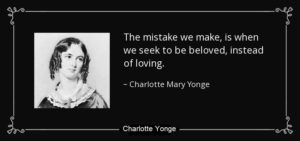
The early life of Charlotte Yonge
Charlotte Mary Yonge was English novelist linked to Oxford Movement. She was born on August 11, 1823, in Otterbourne, Hampshire, England. She was the daughter of a retired army officer William Yonge and her mother named Frances Mary (Fanny) Bargus Yonge.
She also had a younger sister named Julian Yonge who was born on January 13, 1830. She never went to a school, never graduated, the only education she got was either at home from her parents and tutors or through the church. Being born to an army father Charlotte had to go through strict discipline and Spartan conditions in her diet and her nursery.
Education
Her father not only controlled her education but also compelled Charlotte to write from her right hand despite being sinister. Her father no matter how hard he was on her he was her hero. He was a hero to fight the battle of the Waterloo against napoleon and a veteran to fight the Spain wars. He left his commission to marry fanny whose mother Mary Bargus didn’t allow her to marry a military servant. Giving up his job he became idle living in his in-law’s house in Otterbourne.
Her father taught her history, mathematics, Greek, German, Latin and also religious texts. She was a bright student and a very inquisitive one. But her father discouraged her to ask questions and restricted her to express herself. Despite her father’s repressiveness, she respected him. She believed that all ideas and opinions that women get are from the man nearest to them.
The tutors provided her with the lessons of French, Italian and Spanish languages which tried to build her intellect. In her life, each activity was to develop her intellect, not her senses which justifies the firing of a dancing tutor to try to help Charlotte learn a few rudimentary steps. In her upcoming years of adolescent transformed into an elitist class like her family, shy, socially awkward and no appreciation to art.
Though she was a happy child when around her friends and family. The narrow, regressive environment in which Yonge was brought up didn’t allow her to grow into adulthood and understand the light of liberty. Even after her parent’s death, she neither left their house nor their culture nor never disregarded her parent’s values and discipline.
By the time she was twelve, she became more interested in religion. In 1835 in a family together she met John Keble who later became her friend. In 1835, John Keble had come to the vicar of Hurley and Otterbourne. He was a part of high Anglican Oxford movement in 1833 and an acclaimed author of the Christian year published in 1827.
His exceptional work secured him a chair at Oxford University as the professor of poetry. Charlotte’s father drew Keble into a plan for the formation of a new church at Otterbourne and after its competition in 1839 another church was built at Ampfield in 1841.
The start of Literary Career of Charlotte Yonge
With providing religious instruction, eventually, Keble became Charlotte’s tutor and build her in creative writing. With Keble’s religious influence and his teachings, Charlotte became one of the leading novelists of Anglo-Catholic resurrection. Keble was a “pope” to Charlotte and the greatest influencer to her life after her father. She followed the principles of Tractarianism and never doubted the religion.
But in 19-century when science was being replaced by religious beliefs, Charlotte never gave chance to science and never doubted her religious beliefs. To her, doubting the religious beliefs were sin. Darwin and other scientists tried to discover a new era in the 19th century but were unable to change Charlotte.
At the age of fifteen, she accepted religion and wrote her first story and at the age of 20 published her first novel Abbeychurch or Self Control and Self Conceit which was published in 1844.
In 1938 she officially committed herself to the Church of England and used to teach Sunday school classes in her parish. Although she was shy since her childhood teaching was one thing when she faced nothing except happiness. She has written several domestic novels in French for the donation to the church and help the church school girls.
When she was twenty she met Marianne Dyson, who was twenty years older than Charlotte, unmarried and lived with her mother and a brother. Marianne had a similar interest like Charlotte in writing and their views on religion and class status brought them closer. Once on a visit to Dyson Charlotte got the idea for her book The Heir of Redclyffe published in 1853.
Famous works of Charlotte Yonge
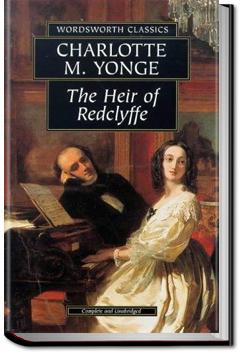
One of the most successful books of the 19th century was Charlotte’s novel the heir of Redclyffe which was published in 1853. It gained popularity similar to the works of Dickens and Thackeray. The story revolves around two cousins with quite different personalities and the spiritual struggle to overcome the darker and evil side of one of a cousin named Guy Morville who is a popular model of noble virtue.
The cousin Philip Edmonstone tries every possible sinister action to prevent Guy from marrying to the gentle Amy who is considered an ideal Victorian wife, an inspiration.
Despite all the bitter enmity between the two, the novel finds a way and reaches to a dramatic ending with an unexpected justification of all the romantic virtues, loyalty, selflessness, epitomising the reminiscences for a glamorised heroic past. The novel is dedicated to the more important issues of duty, obligation, and obedience than love or common sense.
Charlotte started publishing the monthly packet in 1851, yet she had no staff in any office and was able to publish 1500 copies every month. She supplied the copies to church to help people bring their religious belief in their daily lives. Later she finally printed her magazine which got out of print in the year 1895. Her famous stories for school-age children was the magazine for the young which was later complied and was published in the name Langley school.
When the Crimean war broke (1853-1856), Julian went to fight against Russia. Charlotte who was very fond of her brother believed that he would also prove to be like their father. Soon after Julian’s departure to the war, William had a stroke and died. After the death of William on February 1854, her mother and she were unprepared to handle the daily household and business affairs.to their relief, In 1854 Julian returned from the war after suffering a sunstroke.
Heartsease; Or, the Brother’s Wife
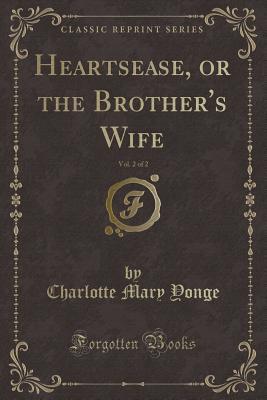
Heartsease; Or, The Brother’s Wife was also published in 1854. Heartsease is the protagonist of the novel Violet, a sixteen-year-old who marries Arthur Martindale who is a thoughtless young officer. Though a happy couple they are not accepted by Arthur’s family.
There is an elder brother, John who later gets impressed by her sister in law and believes that she is more capable than his brother. There is a sister too Theodora who adores her elder brother Arthur but is jealous and intransigent. Violet, with her cheerful nature and kind heart, helps Theodora to grow into a self-knowledge and patience women.
Violets father in law though does not like the behaviours yet are ready to help the young couple. Violet when enters the in-law’s house has to face many difficulties but still manages to fight the hatred and finds her way to everybody’s hearts.
The Daisy Chain, Or, Aspirations: A Family Chronicle
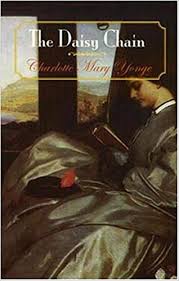
Charlotte’s third novel was a family chronicle titled The Daisy Chain (1856) which was published in 1856. It is an interesting plot which deals with the misfortunes of the protagonist named Etheldred. A day she woke up and finds out everything that she is willing to do as good was turning into discomfort and vain for others, while she wishes to make people happy but instead her happiness her fate attempts and make it gloomy.
She is disheartened and disconcerted by the sinful act. All her warm feelings and endeavours were defeated by the sins and her peculiar helpless hands and reckless eyes that nature had given her. This novel is the best representation of a moral struggle of a protected and sheltered life.
The Young Stepmother
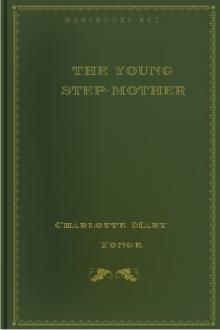
Another of her famous novel The Young Stepmother, published in 1861. There are two versions of this novel, one is the serial which was published before the novel in the year 1856-1860 and the other is its compilation. The book has an interesting plot dealing with modern society and the concept of urban poverty.
It has a very noticeable feminist point of view and deals with real problems of second marriage and family. The novel has a considerable level of humour and many of the complex moral and social issues have been shown in her book. Charlotte tries to examine the place of a gentlewoman in the society of the Victorian era.
Some of her famous works are The Dove in the Eagle’s Nest (1866), The Chaplet of Pearls; or, The White and Black Ribaumont (1868), Cameos from English History, from Rollo to Edward II (1868), Little Lucy’s Wonderful Globe and Other Stories (1871), Aunt Charlotte’s Stories of Greek History (1873), Hannah More (1888), A Reputed Changeling (1889), Two Penniless Princesses (1891) and The Little Duke: Richard the Fearless (1905)
Demise
All her work focused on family stories and religious instructions. One day in her hometown, Otterbourne on March 24, 1901, she died of pneumonia. She was buried in Otterbourne churchyard on March 29, 1901.